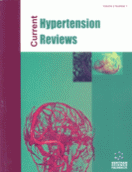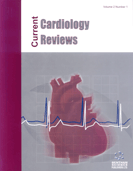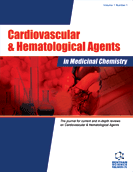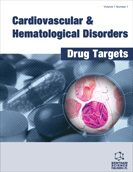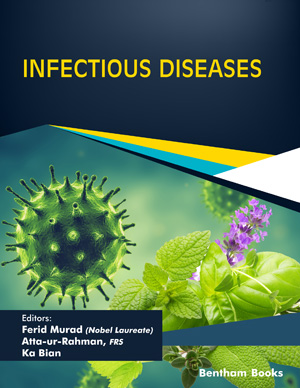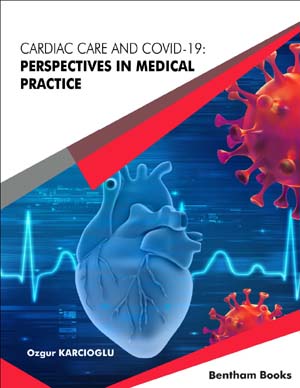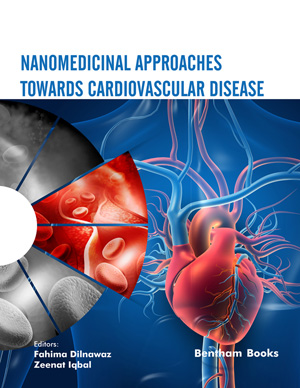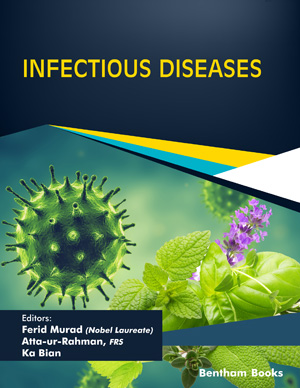Abstract
Objectives: to compare the prevalence of target-organ damage (TOD), defined as carotid plaque, or intima media thickness, cIMT, >0.9 mm, and that of increased renal resistive index (RRI), among HIV-1-infected patients and uninfected hypertensive patients (HT-non HIV).
Methods: HIV-infected patients aged ≥ 18 years and virologically suppressed were matched with pair-age, sex and BMI HT-non HIV. Patients on antihypertensive treatment were excluded. All patients’ cIMT and RRI were evaluated with ultrasonography.
Data were analysed throughout Χ2 test, analysis of variance and logistic regression.
Results: Fifty-nine HIV-infected patients were enrolled (71% men) and matched with 59 HT-non HIV. No differences were found in cIMT values (p=0.827) and in the prevalence of TOD between HIV-infected patients and HT-non HIV (36% vs 38%, p= 0.79).
Among HIV-infected patients, those hypertensive had significantly higher prevalence of TOD (46% vs 21%, P< 0.05) and higher cIMT (0.747 ± 0.104 vs 0.654 ±0.100 mm, p = 0.0185).
Patients with TOD were older (p= 0.004) and more frequently current smokers (p= 0.022).
At the logistic regression analysis, TOD was significantly related to age (p=0.04, 95%CI 1.0-1.1) and smoke, current (p=0.178, 95%CI1.2-12.8) or previous (p=0.04, 95%CI 1.0-7.2).
Mean RRI were identical for both HIV-1 infected and uninfected patients (0.60, SD± 0.05 and 0.60, SD± 0.04, respectively, p=0.996).
Conclusions: In our study TOD was associated to hypertension, older age and smoke, but not to HIV serostatus itself, confirming the major importance of traditional risk factors and the need of risk assessment and cardiovascular prevention measures in HIV-infected patients.
Keywords: Target organ damage, cardiovascular risk, HIV, hypertension, intima media thickness, renal resistive index.
Graphical Abstract
Current Hypertension Reviews
Title:Hypertensive Versus HIV-infected Patients: Who Has the Greatest Target Organ Damage? Comparison of Carotid Plaque Prevalence, Intima Media Thickness and Renal Resistive Index in the Two Groups of Patients
Volume: 14 Issue: 1
Author(s): Lucia Taramasso*, Michele Mirabella, Francesca Cappadona, Barbara Bonino, Niccolo Riccardi, Giovanni Cenderello, Giuseppe Vittorio De Socio, Claudio Viscoli, Francesca Viazzi and Antonio Di Biagio
Affiliation:
- Infectious Diseases Unit, Hospital Policlinico San Martino, University of Genoa, Genoa,Italy
Keywords: Target organ damage, cardiovascular risk, HIV, hypertension, intima media thickness, renal resistive index.
Abstract: Objectives: to compare the prevalence of target-organ damage (TOD), defined as carotid plaque, or intima media thickness, cIMT, >0.9 mm, and that of increased renal resistive index (RRI), among HIV-1-infected patients and uninfected hypertensive patients (HT-non HIV).
Methods: HIV-infected patients aged ≥ 18 years and virologically suppressed were matched with pair-age, sex and BMI HT-non HIV. Patients on antihypertensive treatment were excluded. All patients’ cIMT and RRI were evaluated with ultrasonography.
Data were analysed throughout Χ2 test, analysis of variance and logistic regression.
Results: Fifty-nine HIV-infected patients were enrolled (71% men) and matched with 59 HT-non HIV. No differences were found in cIMT values (p=0.827) and in the prevalence of TOD between HIV-infected patients and HT-non HIV (36% vs 38%, p= 0.79).
Among HIV-infected patients, those hypertensive had significantly higher prevalence of TOD (46% vs 21%, P< 0.05) and higher cIMT (0.747 ± 0.104 vs 0.654 ±0.100 mm, p = 0.0185).
Patients with TOD were older (p= 0.004) and more frequently current smokers (p= 0.022).
At the logistic regression analysis, TOD was significantly related to age (p=0.04, 95%CI 1.0-1.1) and smoke, current (p=0.178, 95%CI1.2-12.8) or previous (p=0.04, 95%CI 1.0-7.2).
Mean RRI were identical for both HIV-1 infected and uninfected patients (0.60, SD± 0.05 and 0.60, SD± 0.04, respectively, p=0.996).
Conclusions: In our study TOD was associated to hypertension, older age and smoke, but not to HIV serostatus itself, confirming the major importance of traditional risk factors and the need of risk assessment and cardiovascular prevention measures in HIV-infected patients.
Export Options
About this article
Cite this article as:
Taramasso Lucia *, Mirabella Michele , Cappadona Francesca , Bonino Barbara , Riccardi Niccolo, Cenderello Giovanni , De Socio Vittorio Giuseppe , Viscoli Claudio , Viazzi Francesca and Di Biagio Antonio , Hypertensive Versus HIV-infected Patients: Who Has the Greatest Target Organ Damage? Comparison of Carotid Plaque Prevalence, Intima Media Thickness and Renal Resistive Index in the Two Groups of Patients, Current Hypertension Reviews 2018; 14 (1) . https://dx.doi.org/10.2174/1573402114666180307145051
| DOI https://dx.doi.org/10.2174/1573402114666180307145051 |
Print ISSN 1573-4021 |
| Publisher Name Bentham Science Publisher |
Online ISSN 1875-6506 |
 38
38 4
4
- Author Guidelines
- Bentham Author Support Services (BASS)
- Graphical Abstracts
- Fabricating and Stating False Information
- Research Misconduct
- Post Publication Discussions and Corrections
- Publishing Ethics and Rectitude
- Increase Visibility of Your Article
- Archiving Policies
- Peer Review Workflow
- Order Your Article Before Print
- Promote Your Article
- Manuscript Transfer Facility
- Editorial Policies
- Allegations from Whistleblowers
Related Articles
-
Endothelium Dependent and Independent Mechanisms of Vasorelaxant Activity of Synthesized 2,5-disubstituted-1,3,4-oxadiazole Derivatives in Rat Thoracic Aorta – Ex vivo and Molecular Docking Studies
Letters in Drug Design & Discovery Protein disulfide isomerase and Nox: new partners in redox signaling
Current Pharmaceutical Design Synthesis, Characterization, and Atenolol Delivery Application of Functionalized Mesoporous Hydroxyapatite Nanoparticles Prepared by Microwave-Assisted Co-precipitation Method
Current Drug Delivery Editorial (Thematic Issue: Natural Leads in Drug Discovery against Metabolic Disorders and their Related Infectious Diseases)
Current Topics in Medicinal Chemistry Chronic Streptococcal and Non-Streptococcal Pharyngitis
Infectious Disorders - Drug Targets Hepatic PPARs: Their Role in Liver Physiology, Fibrosis and Treatment
Current Medicinal Chemistry Pharmacotherapy for Intermittent Claudication: From Consensus-Based to Evidence-Based Treatment
Vascular Disease Prevention (Discontinued) Cardio-Protective Effects of Sodium-Glucose Co-Transporter 2 Inhibitors: Focus on Heart Failure
Current Pharmaceutical Design The c-Met Inhibitors: A New Class of Drugs in the Battle Against Advanced Nonsmall- Cell Lung Cancer
Current Pharmaceutical Design The Pleiotropic Effects of ARB in Vascular Endothelial Progenitor Cells
Current Vascular Pharmacology Epidemiology of Diabetes Mellitus in the United Arab Emirates
Current Diabetes Reviews Immunomodulatory Role of Arsenic in Regulatory T Cells
Endocrine, Metabolic & Immune Disorders - Drug Targets The Current Indications and the Benefits of Combining a β3-Agonist with an Anticholinergic for the Treatment of OAB
Current Drug Targets The Transcriptome in Blood: Challenges and Solutions for Robust Expression Profiling
Current Molecular Medicine Biologically Responsive Nanosystems Targeting Cardiovascular Diseases
Current Drug Delivery Treatment Strategies for Fatty Liver Diseases
Reviews on Recent Clinical Trials Effects of an Antihypertensive Combination in Japanese Hypertensive Outpatients Based on the Long-acting Calcium Channel Blocker Benidipine on Vascular and Renal Events: A Sub-analysis of the COPE Trial
Current Hypertension Reviews Design, Synthesis, and Structure-Activity Relationship Study of Peroxisome Proliferator-Activated Receptor (PPAR) δ-Selective Ligands
Current Medicinal Chemistry Top Three Pharmacogenomics and Personalized Medicine Applications at the Nexus of Renal Pathophysiology and Cardiovascular Medicine
Current Pharmacogenomics and Personalized Medicine Cytochrome P450 4A Fatty Acid Omega Hydroxylases
Current Drug Metabolism


